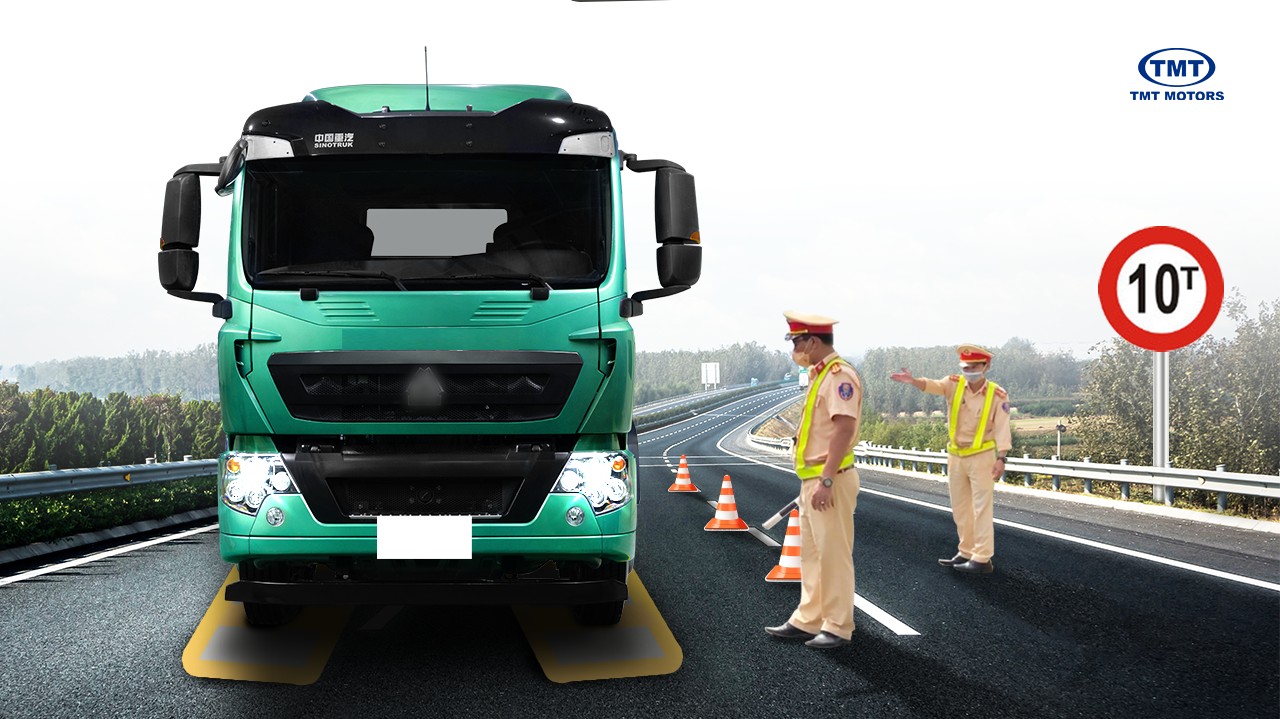Vehicle weight and load capacity are two concepts that can be confusing, especially for those new to trucks or professional drivers just starting out. However, clearly distinguishing between these two concepts is crucial for ensuring safe, legal, and efficient vehicle operation. This article from Xe Tai My Dinh will help you understand gross vehicle weight (GVW), load capacity, related concepts, and important legal regulations in Vietnam.
What is Gross Vehicle Weight (GVW) and How Does It Differ from Payload?
Gross Vehicle Weight (GVW), also known as the total vehicle weight, is the maximum weight a vehicle is allowed to reach when in operation. This figure includes:
- Curb Weight (CW): The weight of the vehicle itself when unloaded and without a driver (typically includes fuel, oil, and other necessary fluids).
- Payload: The maximum weight of cargo the vehicle is permitted to carry.
- Weight of Driver and Passengers: The weight of the driver and any passengers in the vehicle.
Formula for calculating Gross Vehicle Weight:
Gross Vehicle Weight (GVW) = Curb Weight (CW) + Payload + Weight of Driver and Passengers
Payload, on the other hand, is simply the maximum weight of cargo a vehicle is allowed to carry, excluding the vehicle’s curb weight and the weight of the driver and passengers.
Formula for calculating Payload:
Payload = Gross Vehicle Weight (GVW) – Curb Weight (CW) – Weight of Driver and Passengers
Illustrative Example:
A truck has a curb weight (CW) of 3 tons, a gross vehicle weight rating (GVWR) of 7 tons, and is expected to have 2 people in the vehicle, each weighing an average of 70kg.
- Gross Vehicle Weight (GVW) when carrying maximum cargo: 7 tons (according to GVWR)
- Maximum Payload: 7 tons (GVW) – 3 tons (CW) – 0.14 tons (2 people) = 3.86 tons
In this case, the truck can carry a maximum of 3.86 tons of cargo while ensuring it does not exceed the permitted gross vehicle weight of 7 tons.
 Difference between gross vehicle weight and payload.
Difference between gross vehicle weight and payload.
Distinguishing GVW from Other Easily Confused Concepts
To better understand gross vehicle weight, it is also necessary to distinguish it from other frequently confused concepts:
- Gross Vehicle Weight Rating (GVWR): This is the maximum gross vehicle weight that the manufacturer specifies for safe and efficient vehicle operation. GVWR is an important technical parameter, clearly stated in the vehicle registration certificate, and serves as the basis for authorities to control vehicle weight. Important Note: The Gross Vehicle Weight (GVW) must not exceed the Gross Vehicle Weight Rating (GVWR).
- Gross Combination Weight Rating (GCWR): This concept applies to tractor-trailers. GCWR is the maximum permissible total weight of both the tractor and semi-trailer when combined, including cargo.
- Gross Combination Weight (GCW): The actual total weight of the tractor and semi-trailer at a specific time, including the curb weight of both vehicles, the weight of the cargo, and the driver. The GCW must not exceed the GCWR.
- Towing Capacity: This figure indicates the maximum weight of cargo that a tractor can tow via a trailer or semi-trailer. Towing capacity is calculated based on the GCWR and GVWR of the tractor.
 Distinguishing GVW from related concepts.
Distinguishing GVW from related concepts.
Regulations on Gross Vehicle Weight in Vietnam and Penalties for Violations
The Vietnamese government has very specific regulations regarding gross vehicle weight and cargo weight to protect traffic infrastructure, ensure traffic safety, and reduce accidents. These regulations are clearly stated in Decree 100/2019/ND-CP (amended by Decree 123/2021/ND-CP) of the Government, stipulating penalties for administrative violations in the field of road and rail transport.
Key Regulations on Vehicle Weight:
- For passenger vehicles: It is forbidden to carry more than the specified number of people and to carry goods exceeding the manufacturer’s permitted weight.
- For cargo trucks: It is forbidden to carry goods exceeding the permitted payload, gross vehicle weight rating (GVWR), and other technical parameters specified by the manufacturer and the law.
- For tractors and semi-trailers: Comply with regulations on gross combination weight rating (GCWR), towing capacity, and other related regulations.
Penalties for Violations:
Violations of regulations on gross vehicle weight and cargo weight are subject to heavy penalties under Decree 100/2019/ND-CP and Decree 123/2021/ND-CP. The fine can range from 4 million VND to 50 million VND for individuals, and double for organizations, depending on the severity of the violation (percentage exceeding the weight limit) and the type of vehicle.
In addition to fines, violating drivers may also have their driver’s license revoked for 01 to 05 months. Vehicle owners are also responsible and will be penalized if a violation occurs. In particular, violating vehicles will be forced to unload the portion of cargo exceeding the regulations before being allowed to continue traveling.
 Regulations and penalties for violating gross vehicle weight.
Regulations and penalties for violating gross vehicle weight.
Advice from Xe Tai My Dinh:
To avoid legal risks and ensure safety when operating trucks, drivers and transport business owners need to:
- Understand the concepts of gross vehicle weight, payload, and related parameters.
- Carefully check the technical specifications of the vehicle, especially GVWR, Payload, and GCWR (if it is a tractor).
- Strictly comply with Vietnamese law regarding vehicle weight regulations.
- Regularly check the weight of cargo before departure.
- Choose high-quality trucks with weight specifications suitable for transport needs.
Xe Tai My Dinh is always ready to provide customers with genuine, high-quality trucks that meet all transportation needs and fully comply with weight regulations. Contact us today for detailed advice and the best quotes!
Contact Information:
- Hotline: 1900 5454 62
- Dealer Network: https://xetaimydinh.vn/dai-ly
- Website: https://xetaimydinh.vn

